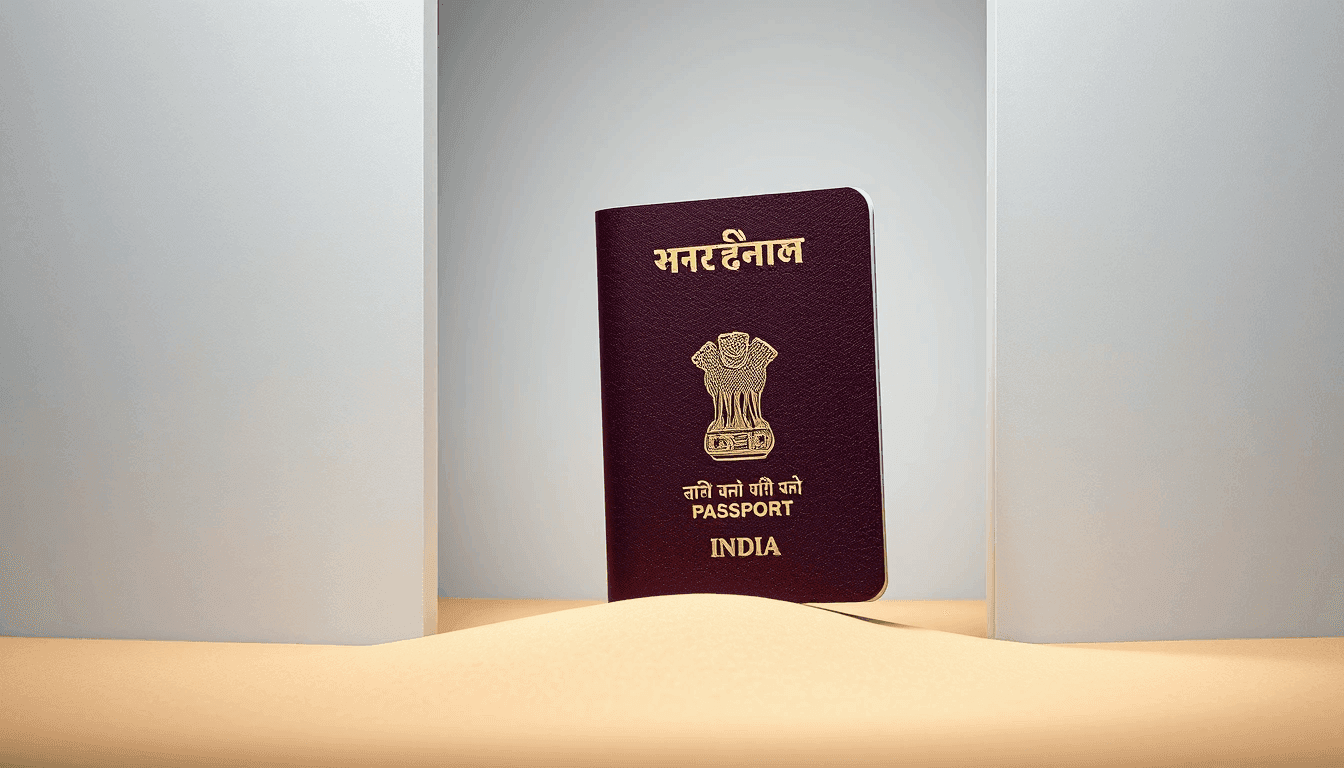

Navigating the complexities of international taxation can feel like a maze, especially when you're a resident of one country earning income from another. If you're an Indian resident earning income from the UAE, or a UAE resident with income from India, understanding the Double Taxation Avoidance Agreement (DTAA) between the two nations is crucial. This guide will walk you through the essentials, helping you understand how to leverage the DTAA to avoid paying tax twice on the same income.
What is DTAA and Why Does It Matter for India-UAE Residents?
A Double Taxation Avoidance Agreement (DTAA) is essentially a tax treaty between two countries that aims to prevent individuals and entities from paying income tax on the same income in both countries. For residents of India and the UAE, this agreement is vital because it clarifies which country has the primary right to tax specific types of income, or how tax paid in one country can be offset against tax liability in the other.
Without a DTAA, you could potentially pay income tax in the UAE (if you're a resident there earning Indian income) and then again in India (if you're an Indian resident earning UAE income, as India taxes global income). The DTAA between India and the UAE, signed in 1993 and amended over time, ensures this doesn't happen.
How the India-UAE DTAA Works: Exemption vs. Credit Method
The DTAA primarily uses two methods to avoid double taxation:
- Exemption Method: Under this method, income earned in one country is exempt from tax in the other country. This means if the DTAA specifies that a certain income type should only be taxed in the UAE (the source country), then as an Indian resident, you wouldn't need to pay tax on that income in India.
- Credit Method: This is more common. If income is taxable in both countries according to the DTAA, the country of residence (where you are a tax resident) will allow you to claim a credit for the tax already paid in the other country (the source country). For example, if you're an Indian resident earning income from the UAE, and you've paid tax on that income in the UAE, India will allow you to reduce your Indian tax liability by the amount of tax you paid in the UAE, up to the Indian tax payable on that income.
The India-UAE DTAA primarily uses the credit method for most income types, meaning you'll declare the foreign income in your resident country and claim credit for taxes paid abroad.
Who is a "Resident" Under the DTAA?
To claim DTAA benefits, you must be considered a "resident" of either India or the UAE as per the DTAA's definition. This is critical because the DTAA applies only to residents of one or both contracting states.
- For India: An individual is generally a tax resident if they spend 182 days or more in India during the financial year, or 60 days or more in the current financial year and 365 days or more in the preceding four financial years.
- For UAE: The UAE generally considers an individual a tax resident if they have their permanent home in the UAE, or spend 183 days or more in the country during a 12-month period, or are a citizen or national and meet certain other criteria. However, for DTAA purposes, the most crucial document is the Tax Residency Certificate (TRC).
The Importance of a Tax Residency Certificate (TRC)
A Tax Residency Certificate (TRC), also known as a Certificate of Residence (COR), is the most important document you'll need. It's an official document issued by the tax authority of your country of residence (e.g., the UAE Ministry of Finance for UAE residents) confirming your tax residency status for a specific period.
- For UAE Residents: To claim DTAA benefits in India, a UAE resident will need a TRC from the UAE Ministry of Finance. The application process usually involves submitting documents like a valid passport, visa, Emirates ID, bank statements, and proof of income/source of funds. It's crucial to apply for this well in advance, as processing times can vary.
- For Indian Residents: Indian residents typically don't need a TRC from India to claim DTAA benefits in India for UAE-sourced income, as their tax residency is established through their tax filings with the Income Tax Department of India. However, if an Indian resident needs to claim DTAA benefits in the UAE (e.g., to reduce withholding tax on certain income), they might need a TRC from the Indian tax authorities.
Key Provisions of the India-UAE DTAA for Various Income Types
The DTAA specifies rules for different categories of income. Here's a simplified overview:
-
Salaries/Employment Income:
- Generally, salaries are taxed in the country where the employment is exercised (i.e., where you physically perform the work).
- Exception (183-day rule): If you are a resident of one country (e.g., UAE) and work in the other (e.g., India) for less than 183 days in any 12-month period, and your remuneration is paid by an employer who is not a resident of the country where you work, and the cost of your salary is not borne by a permanent establishment your employer has in that country, then your salary might only be taxable in your country of residence. This is a common situation for short-term assignments.
-
Business Profits:
- Business profits of an enterprise of one country (e.g., UAE) are only taxable in that country, unless the enterprise carries on business in the other country (e.g., India) through a Permanent Establishment (PE) situated there.
- If there's a PE, then only the profits attributable to that PE can be taxed in the other country. A PE typically includes a fixed place of business like a branch, office, factory, or a construction site lasting more than 6 months.
-
Dividends:
- Dividends paid by a company resident in one country (e.g., India) to a resident of the other country (e.g., UAE) may be taxed in the source country.
- However, the DTAA limits the withholding tax rate in the source country to 10% of the gross amount of the dividends. The country of residence (e.g., UAE) will then provide credit for this tax paid.
-
Interest:
- Interest arising in one country (e.g., India) and paid to a resident of the other country (e.g., UAE) may be taxed in the source country.
- The DTAA limits the withholding tax rate in the source country to 10% of the gross amount of the interest.
-
Royalties and Fees for Technical Services (FTS):
- Royalties and FTS arising in one country (e.g., India) and paid to a resident of the other country (e.g., UAE) may be taxed in the source country.
- The DTAA limits the withholding tax rate in the source country to 10% of the gross amount of the royalties or FTS.
-
Capital Gains:
- Gains from the sale of immovable property are generally taxable in the country where the property is located.
- Gains from the sale of shares derive their value principally from immovable property situated in the other country are also taxable in that other country.
- Gains from the sale of other assets (like shares of companies not covered by the above, or movable property) are generally taxable only in the country of residence of the seller. This is a significant benefit for UAE residents selling Indian shares that are not property-rich companies.
-
Other Income:
- Income not specifically covered by other articles of the DTAA is generally taxable only in the country of residence of the recipient.
Practical Steps to Claim DTAA Benefits
Claiming DTAA benefits isn't automatic; you need to follow a process.
For a UAE Resident Earning Income from India:
- Obtain a Tax Residency Certificate (TRC): Apply to the UAE Ministry of Finance for a TRC for the relevant financial year. This is your primary proof of residency in the UAE.
- Provide TRC to Indian Payer: If you're receiving income from India (e.g., dividends, interest, royalties, rent), provide your valid TRC and a self-declaration (Form 10F, if applicable, or a general declaration as per DTAA requirements) to the Indian entity paying you. This will allow the Indian payer to apply the reduced DTAA withholding tax rates (e.g., 10% instead of standard domestic rates) or exempt income if applicable.
- File Indian Tax Return (if required): If your income exceeds the basic exemption limit in India, or if tax was withheld at a higher rate and you need a refund, you'll need to file an income tax return in India. You'll declare your Indian-sourced income and apply the DTAA provisions.
For an Indian Resident Earning Income from the UAE:
- Maintain Records of UAE Income and Tax Paid: Keep clear records of all income earned in the UAE and any tax paid there (even if the UAE has no income tax for individuals, it's good practice for other taxes like corporate tax for businesses).
- Declare Global Income in India: As an Indian resident, you are required to declare your global income, including income earned in the UAE, in your Indian income tax return.
- Claim Foreign Tax Credit (FTC):
- In your Indian income tax return, declare the UAE-sourced income.
- If you paid tax in the UAE on that income (e.g., corporate tax if you're a business, or specific local taxes), you can claim a Foreign Tax Credit.
- You'll need to submit Form 67 electronically on the Income Tax Department of India portal before filing your return.
- Attach supporting documents:
- Certificate from the tax authority of the UAE (if tax was paid there) specifying the amount of tax paid and the nature of the income.
- Proof of tax payment in the UAE (e.g., tax payment challans, bank statements).
- Income Proofs: Documents showing the nature and amount of income earned in the UAE.
- The credit allowed will be the lower of the tax paid in the UAE or the tax payable on that income in India.
Common Challenges and Pitfalls
- Residency Mismatch: Conflicting claims of tax residency by India and the UAE can lead to complications. The DTAA has "tie-breaker rules" based on factors like permanent home, centre of vital interests, and habitual abode to determine a single residency.
- Documentation: Lack of proper documentation, especially a valid TRC or proof of foreign tax paid, is the most common reason for DTAA claims being denied or delayed.
- Understanding Specific Articles: The DTAA is a legal document. Misinterpreting specific articles for different income types can lead to incorrect tax positions.
- Changes in Law: Tax laws in both countries, and the DTAA itself, can be amended. Staying updated is crucial.
- Permanent Establishment (PE) Risk: For businesses, inadvertently creating a PE in the other country can trigger significant tax liabilities.
- Time Limits: There are specific deadlines for filing tax returns and claiming DTAA benefits or foreign tax credit. Missing these can result in penalties or loss of benefits.
Frequently Asked Questions
- Is DTAA benefit automatic? No, you must actively claim it by following the prescribed procedures and providing the necessary documentation.
- What if I don't have a TRC from the UAE? Without a valid TRC, Indian payers may not apply the DTAA's reduced withholding tax rates, and you might face challenges claiming benefits when filing your Indian tax return.
- Does the DTAA cover all types of income? The DTAA covers most common income types, but there might be specific exclusions or unique situations not explicitly addressed. Always refer to the specific articles.
- What's the difference between the exemption and credit method in practice? With exemption, you simply don't report the income in the resident country (or report it as exempt). With the credit method, you report the income, calculate the tax, and then reduce that tax by the amount already paid in the other country.
- Can I claim DTAA benefits for past years? Generally, you can revise your tax returns for previous years within the permissible limits if you missed claiming DTAA benefits, provided you have all the necessary documentation.
Conclusion and Next Steps
The India-UAE DTAA is a powerful tool designed to ease the burden of international taxation for residents. However, its application requires careful understanding of tax residency rules, specific income classifications, and meticulous documentation.
If you're dealing with significant cross-border income, the best next step is to consult with a qualified tax advisor specializing in international taxation for India and the UAE. They can help you:
- Determine your exact tax residency status.
- Understand the specific DTAA provisions applicable to your income.
- Assist with obtaining the necessary documentation, like a TRC.
- Guide you through the process of filing tax returns and claiming benefits correctly.
Navigating DTAA rules confidently means less stress and more savings. With the right approach and professional guidance, you can ensure you're paying only what's due, in the right country.

About Harleen Kaur Bawa
Harleen Kaur Bawa is a licensed immigration attorney specializing in Canadian immigration and Indian services. With extensive experience in family sponsorship, Express Entry, refugee claims, and OCI services, she has successfully helped hundreds of clients navigate complex immigration processes.
Harleen holds degrees from York University - Osgoode Hall Law School and the University of Toronto, and is certified by the Law Society of Ontario and the Immigration Consultants of Canada Regulatory Council. She is committed to providing personalized, professional legal services to help clients achieve their immigration goals.
Related Articles

Renewing Your Indian Passport in UAE Without the Old Passport: A Practical Guide
Lost, stolen, or damaged Indian passport in UAE? Get the essential guide to re-issue. Understand police reports, documents, fees, and timelines for a smooth process.

Your Guide to Child Birth Registration at the Indian Embassy Dubai: A Step-by-Step Process
Simplify newborn Indian passport & birth registration in Dubai for expats. Our guide helps Indian parents navigate documents & avoid pitfalls efficiently.

Fixing OCI Application Photo and Signature Upload Errors in the UAE: Your Practical Guide
Applying for OCI from UAE? Fix common photo & signature upload errors like dimensions, file size & background. Get precise steps to ensure your application isn't rejected.